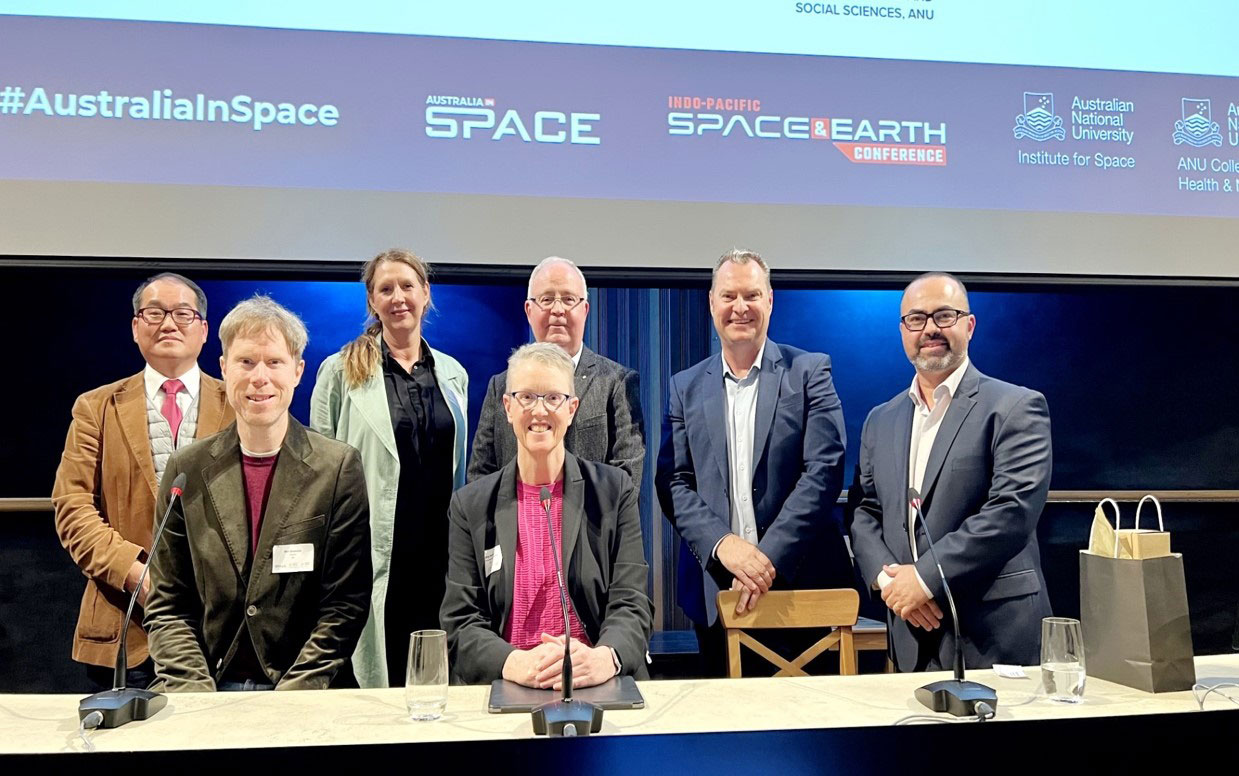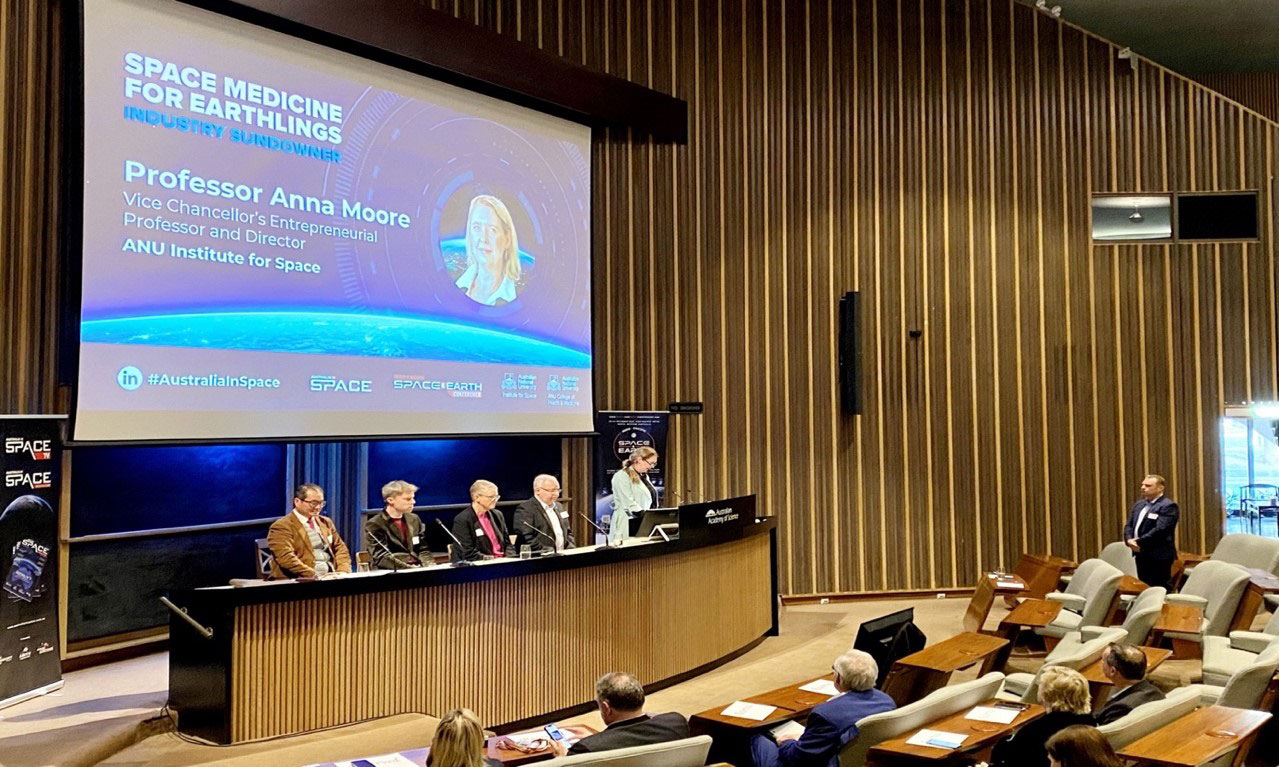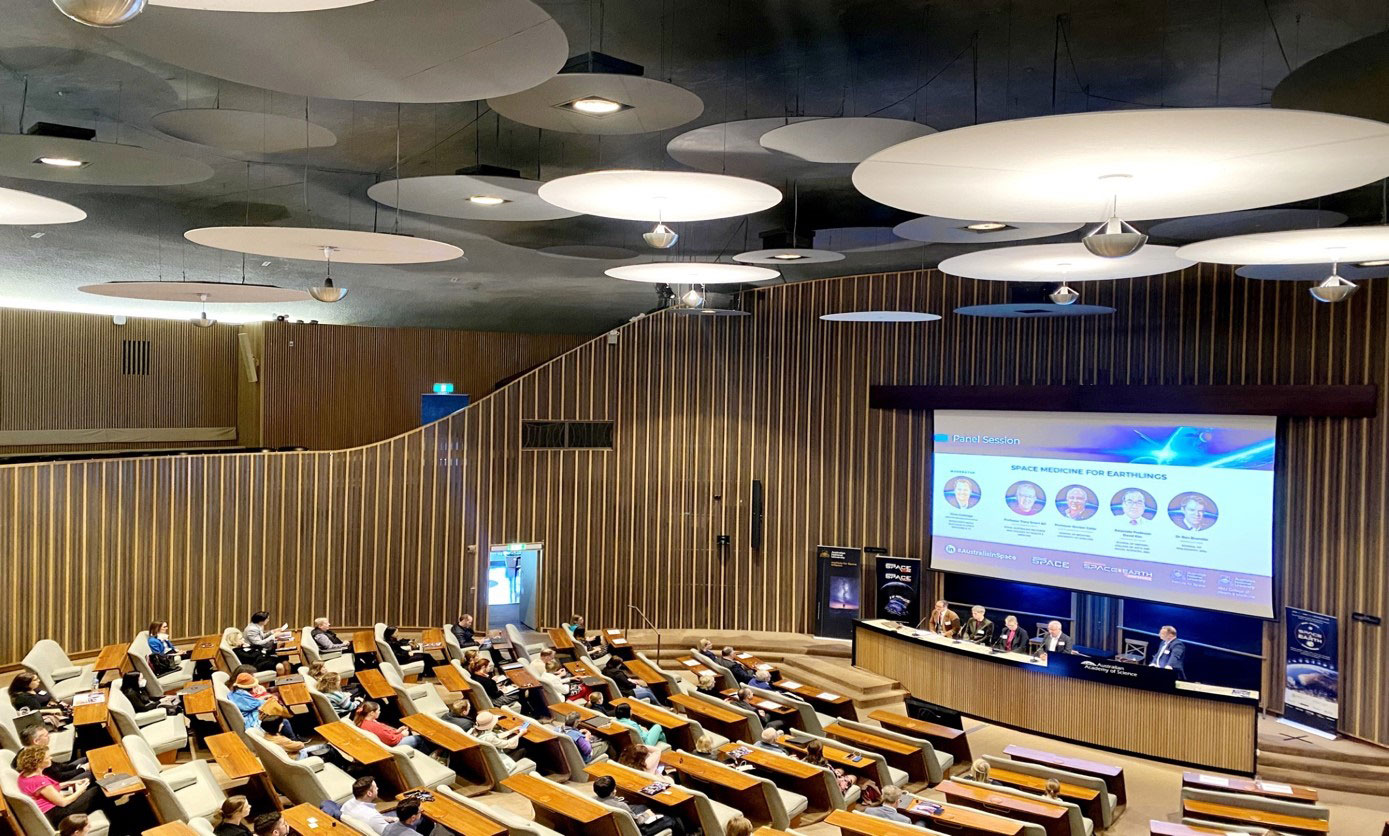영국 왕립역사학회 (The Royal Historical Society, United Kingdom) 석학회원으로 활동중인 우리 대학 데이비드 윌리엄 김 (David William Kim)교수는 오스트레일리아 학술원 (Australian Academy of Sciences, ASS), 항공우주국 (Australian Space Agency), ANU 우주연구소가 공동 개최한 포럼에 4명의 연설자중 한 명으로 초대받았다. 데이비드 윌리엄 김 교수는 최근 연구주제 중 하나인, 우주인의 health, medicine, spirituality, willpower 분야에 대해 radiation, weightlessness (gravity), confinement, loneliness 문제점과 장기 해결책으로 risk management, safety and security 에 대해 연설했다. 아래는 발표내용 중 일부이다.

Neil Alden Armstrong (1930–2012), who was an American astronaut and aeronautical engineer in 1969, became the first person to walk on the Moon. His pre-astronaut career at the Korean War (1950-53) developed his professional aviation experience in the late 1950s and the 1960s to be a test pilot for space projects. His passion, the spirit of challenge, and the personal belief in his vision and goal were motivational.
Traditionally, scientists and engineers are the main experts in space sphere of research until recent times, but since the space travel time is getting longer, such as 6 months, 1 year and 1.5 years in the International Space Station (ISS), the role of human research is a rising field of research for safety. Further, NASA, China, India and other nations’ plan to send human to Mars brings another reason why this research is important as the non-scientific field of research but necessary to consider unless human are already satisfied with the non-human space project.

Why we choose Mars instead of other planets? There are scientific reasons. Firstly, it is the nearest one from earth. Mars is counted as a very young history of 42 in 2023. The Martian day is 24 hours and 40 minutes. The average temperature is a range from -140˚ to 30˚. The evidence of plentiful CO2 is harmonized “with a dense gaseous atmosphere and liquid (water and ice) oceans.” However, for the travel to the red planet, there are 5 major obstacles we have to consider for solutions. Some of them have been fixed out already by the space medicine or technology. Radiation is the first hazard of a human mission to Mars, which is invisible to the human eye. Travelling to the moon and Mars will experience 700 times more radiation. The scientific issue of space radiation badly affects the human central nervous system, including DNA, cells, and tissues. On Mars, astronauts would need to live and work in three-eighths of Earth’s gravitational pull for up to two years. Additionally, on the six-month trek between the planets, explorers will experience total weightlessness. When astronauts finally return home, they will need to readapt many of the systems in their bodies to Earth’s gravity. …

In near future (next 15-20 years), when the space tourism is generalised, there are many related jobs can be increased, for which you do not have to be a scientific expert. For space station and moon station, we would need space hotel services providers, travel agency, facility engineers, tour guide, farmer, shop owner, restaurant, doctor, nurses, etc. Further, there’s much more to a career in space than being an astronaut. Space is a multidisciplinary domain and needs all sorts of skillsets and types of people. For example, we need technical specialists: fabricator, cyber security specialist, space lawyer, CNC machinist, CAD drafters and designers, intelligent game developer, and avionics technician. The engineer specialists include robotics engineer, propulsion engineer, space systems engineer, AI engineer, Software engineer. For management and administration, we additionally need experts like project manager, network and systems administrator, health and safety officer, communications and marketing professional, space education outreach officer, space business development manager.








